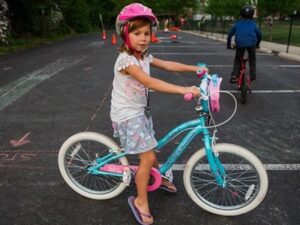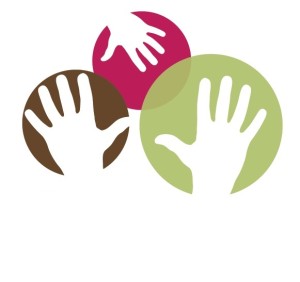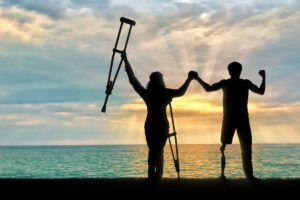“Exercise not only changes your body, it changes your mind, your attitude and your mood.”
— Unknown
“Practice puts brains in your muscles.”
— Sam Snead
Summertime fun, sports, and outdoor activities are almost upon us. That’s why this Buzz focuses on the importance of physical movement in our children’s overall health. For many children with disabilities, sports, games, and outdoor fun can be difficult due to their disability. The resources we mention in this Buzz can help families, friends, and community members involve children with disabilities in many kinds of physical activities, making adaptations suited to the children and the nature of their disabilities.
Let’s go play!
The CPIR Team
_______________________
Intros and Overviews
 Sports and Children with Disabilities
Sports and Children with Disabilities
All children can benefit from the exercise, energy release, and pure enjoyment of playing sports. This includes children with disabilities. This article talks about the benefits of sports, the types of sports for children with special needs, and how to get started with sports.
Fun Activities to Stay Active with Physical Disabilities
Just because a child is in a wheelchair or has other physical disabilities does not mean that he or she can’t stay active. There are plenty of games and sports that children can play when properly modified. (Example: Lower the basketball hoop for children in wheelchairs or place a ball on a tee instead of having it be pitched.) Let children try a variety of activities and adapt those activities to their needs. From PediaPlex.
_______________________
Suggestions for Schools and Communities
Physical Activity for Students with Disabilities
Check out this 5-step plan from Action for Healthy Kids that starts with “safety first” and includes consideration of each child’s IEP and how wellness activities can support the overall educational plan for each child. After explaining the steps in the plan, the article also covers general inclusion ideas for all students and concludes with ways to adjust physical activities to include students with disabilities.
Action for Healthy Kids offers lots of resources in Spanish. See the list at: https://www.actionforhealthykids.org/game-on-activity-library/?activity_spanish%5B%5D=162
Including All Children: Health for Kids With Disabilities
Also from Action for Healthy Kids is this lengthier article that takes a look at barriers to participation across various types of special needs (e.g., medical, sensory-communication, social-psychological, mobility, cognitive), possible physical activity limitations associated with each, and inclusion tips for each.
Exercise And Activities For Kids With Physical Disabilities
Here are insights and suggestions from a physical therapist, with respect to kids and teens that use walkers, crutches or canes for mobility; kids and teens that use a wheelchair for mobility; and kids with significant movement limitations. From Pediatric Therapy Essentials.
Inclusion Resources
Need info on inclusion of children with disabilities in school and in the community? This site has a wealth of information, including videos on strategies and best practices for inclusion. Great stuff!
_______________________
National Center on Health, Physical Activity and Disability (NCHPAD)
 The National Center on Health, Physical Activity and Disability (NCHPAD) seeks to help people with disability and other chronic health conditions achieve health benefits through increased participation in all types of physical and social activities, including fitness and aquatic activities, recreational and sports programs, adaptive equipment usage, and more. Here are two sections of their website to explore in particular:
The National Center on Health, Physical Activity and Disability (NCHPAD) seeks to help people with disability and other chronic health conditions achieve health benefits through increased participation in all types of physical and social activities, including fitness and aquatic activities, recreational and sports programs, adaptive equipment usage, and more. Here are two sections of their website to explore in particular:
Factsheets | Factsheets describe various disabilities and health conditions, as well as physical activity, exercise, and overall health considerations and recommendations associated with each.
Home Workout Videos | Videos for kids and adults to guide their exercise at home; some videos are short, others are 20 minutes or more.
And last but not least from NCHPAD:
Love Yourself: Self-Care For People With a Disability
This 3-page article urges people with disabilities to “take some time to show yourself some love.” It highlights some ways they can do that, like foot checks, deep cleaning their wheelchair, or finding some movement that’s right for them.
_______________________
 This eNewsletter from the CPIR is copyright-free.
This eNewsletter from the CPIR is copyright-free.
We encourage you to share it with others.
Center for Parent Information and Resources
c/o SPAN, Inc.
35 Halsey St., Fourth Floor
Newark, NJ 07102
https://www.parentcenterhub.org
Subscribe to the Buzz from the Hub.
See past issues of the Buzz.
____________________________________________________________
Publication of this eNewsletter is made possible through Cooperative Agreement H328R180005 between OSEP and the Statewide Parent Advocacy Network (SPAN). The contents do not necessarily reflect the views or policies of the Department of Education, nor does mention of trade names, commercial products, or organizations imply endorsement by the U.S. Government or by the Center for Parent Information and Resources.


